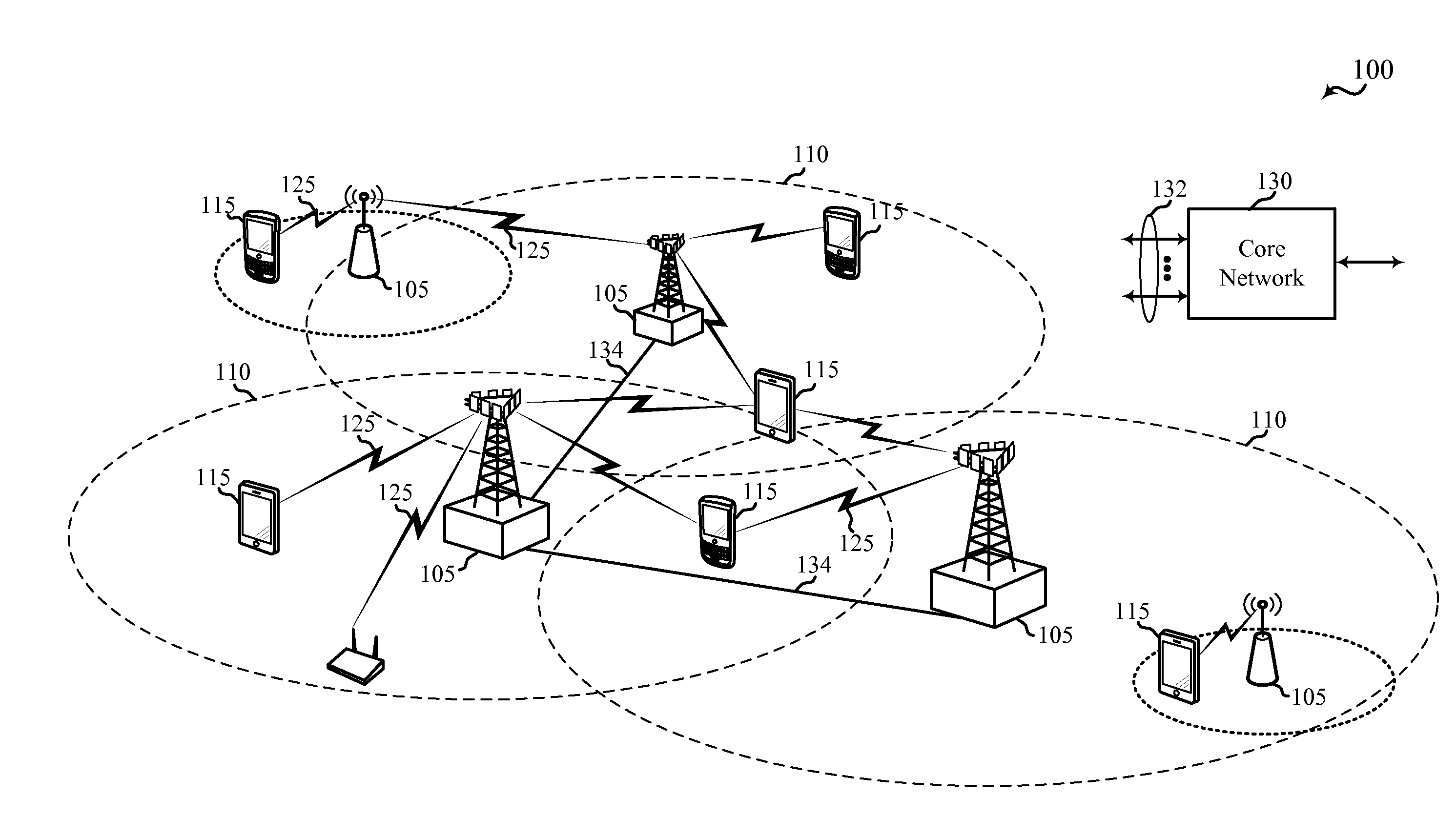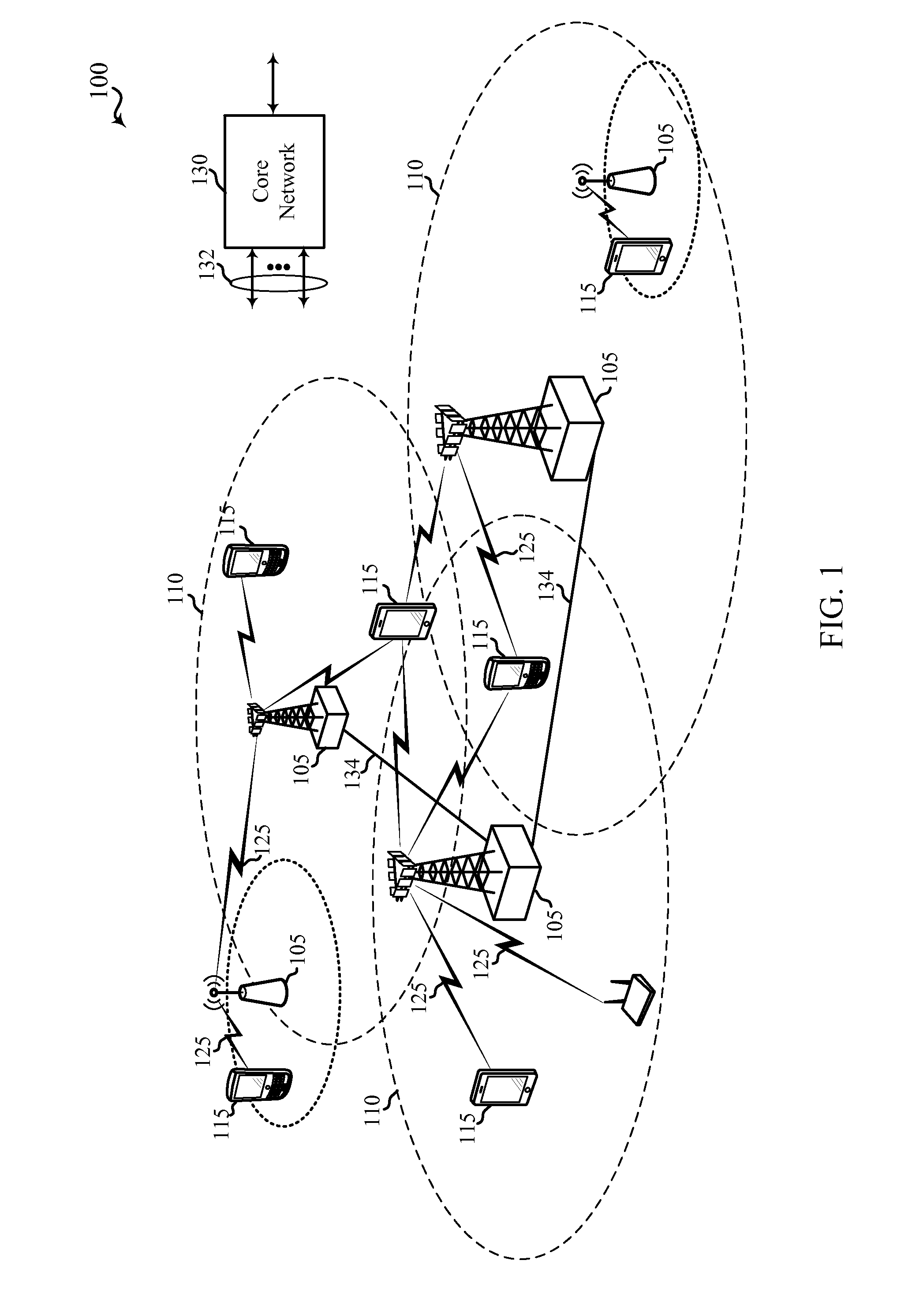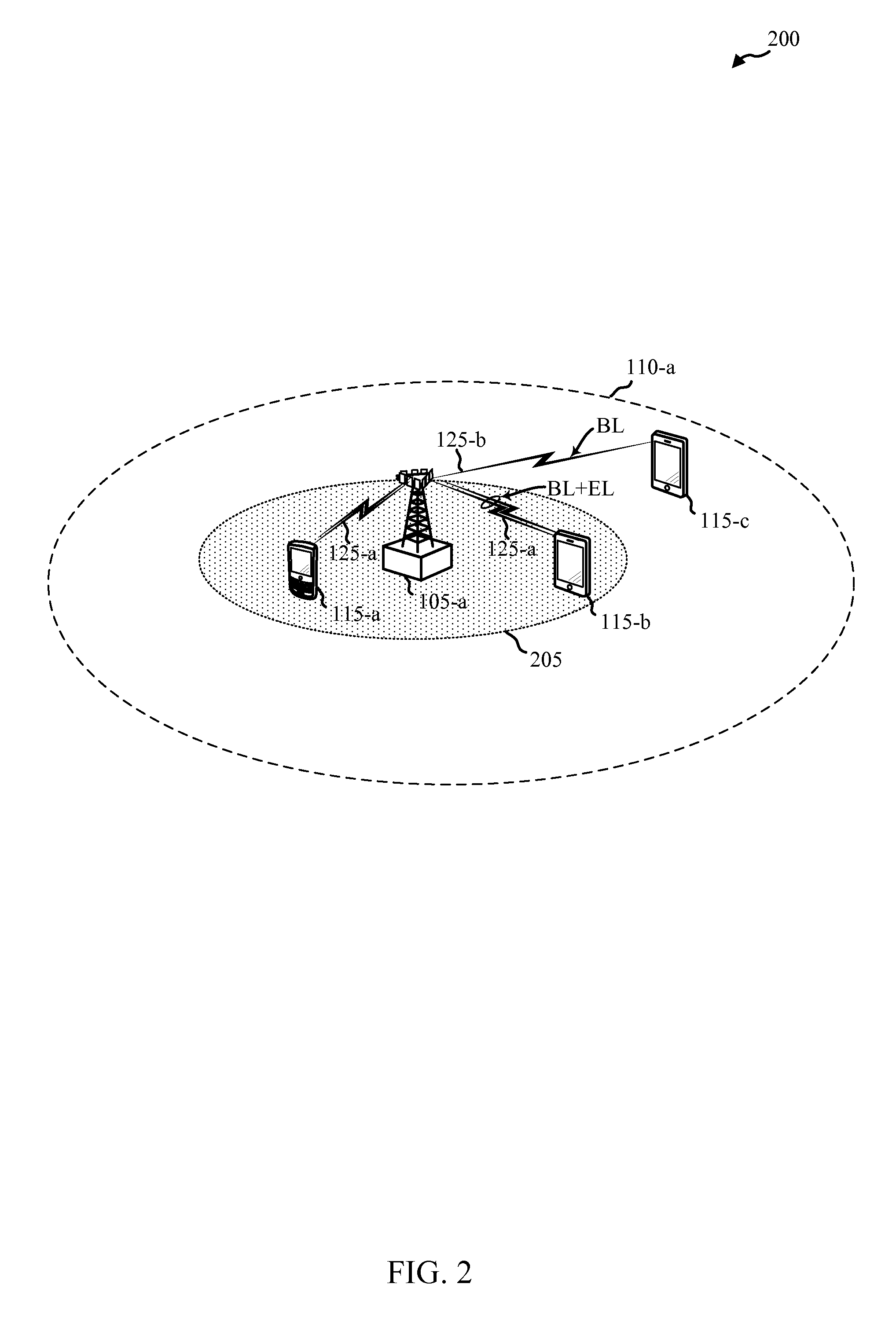Non-orthogonal multiple access and interference cancellation
a multiple access and interference cancellation technology, applied in the field of wireless communication systems, can solve problems such as interference from radios operating in adjacent frequency bands, and achieve the effects of enhancing modulation, reducing interference from the base modulation layer, and enhancing modulation
- Summary
- Abstract
- Description
- Claims
- Application Information
AI Technical Summary
Benefits of technology
Problems solved by technology
Method used
Image
Examples
Embodiment Construction
[0106]Techniques are described for interference mitigation and hierarchical modulation within a wireless communications system. A base station (e.g., an evolved Node B (eNB)) and / or a user equipment (UE) may be configured to operate within the wireless communications system and may transmit / receive wireless communications on both a base modulation layer as well as on an enhancement modulation layer that is modulated on the base modulation layer. Thus, concurrent, non-orthogonal, data streams may be provided to the same or different UEs, and each modulation layer may be used to transmit content that may be selected based on particular deployments and / or channel conditions. Various interference mitigation techniques may be implemented in examples to compensate for interfering signals received from within a cell, compensate for interfering signals received from other cells, and / or compensate for interfering signals received from other radios that may operate in adjacent wireless commun...
PUM
 Login to View More
Login to View More Abstract
Description
Claims
Application Information
 Login to View More
Login to View More - R&D
- Intellectual Property
- Life Sciences
- Materials
- Tech Scout
- Unparalleled Data Quality
- Higher Quality Content
- 60% Fewer Hallucinations
Browse by: Latest US Patents, China's latest patents, Technical Efficacy Thesaurus, Application Domain, Technology Topic, Popular Technical Reports.
© 2025 PatSnap. All rights reserved.Legal|Privacy policy|Modern Slavery Act Transparency Statement|Sitemap|About US| Contact US: help@patsnap.com



